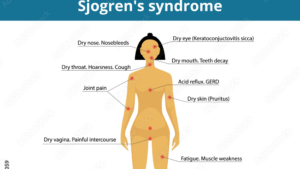
Focus on long-term protection
Multiple sclerosis is currently an incurable, chronic autoimmune disease. While it is possible to effectively manage the feared relapses with existing therapies, novel approaches aim to provide important protection against long-term impairments.
Multiple sclerosis (MS) is often referred to as the “disease of a thousand faces.” The symptoms and course of the disease vary greatly, which is attributed to the autoimmune nature of the condition. In MS, the immune system attacks and damages the myelin sheaths, which is the coating that protects the nerves in the central nervous system. Since these damages can occur in any region of the brain and spinal cord, the symptoms are contingent upon the particular areas of the nervous system that are affected.
It is estimated that approximately 2.9 million people worldwide suffer from MS, with about 200,000 new cases diagnosed every year. This highlights the urgent need for improved therapies. “The biggest worry for MS patients tends to be the continuous worsening of disability, which is exactly where new, innovative treatments should be focused,” says Dr. Daniel Vitt, CEO of Immunic.
The biotechnology company Immunic, headquartered in New York with its research and development centre in Graefelfing near Munich, currently has three small molecule products in development. Two of these, vidofludimus calcium and IMU-856, are in clinical development stage. The company’s lead asset, vidofludimus calcium, is currently being tested in two Phase 3 trials and a Phase 2 trial in relapsing and progressive MS, respectively.
Vidofludimus calcium is a selective immune-modulator that activates the transcription factor nuclear receptor related 1 (Nurr1), which is associated with direct neuroprotective effects. Additionally, vidofludimus calcium inhibits dihydroorotate dehydrogenase (DHODH), a key enzyme in the metabolism of overactive immune cells and virus-infected cells, which is linked to anti-inflammatory and antiviral effects.
Immunic has published the results of the Phase 2 EMPhASIS trial with vidofludimus calcium in relapsing-remitting MS in “Neurology® Neuroimmunology & Neuroinflammation” and “Annals of Clinical and Translational Neurology.” For Dr. Vitt, the next major milestone will be reached next year: “We expect the readout of top-line data from our Phase 2 CALLIPER trial, with the focus on progressive MS, in April 2025.”
Unmet Medical Need
MS not only presents with a thousand faces, but also varies in its course from the moment of disease onset. Approximately 85% of patients are diagnosed with the relapsing form of the disease, which primarily affects young adults and is more common in women then in men. This form of MS alternates between periods of low or no disease activity and severe symptoms. Relapses can vary in length and intensity and cause different symptoms, including vision problems, numbness or difficulty walking. In the relapse-free phases, the described symptoms can fully or partially regress, but will lead to accumulated disability over the years.
A very common, often underestimated symptom of MS is chronic fatigue, which exceeds ordinary tiredness and imposes significant limitations for patients. At least two-thirds of MS patients suffer from fatigue, with one-third citing it as the most burdensome symptom, especially concerning daily business and social life. Although the exact cause of MS-fatigue is not fully understood, it is thought to be linked to constant viral reactivation, similar to post-viral infection fatigue, with Epstein-Barr Virus (EBV) being a suspected culprit. A key developmental objective would be to use medications to break the cycle of persistent immune reactions triggered by EBV, which could help alleviate chronic fatigue.
About 15% of MS patients experience a progressive worsening of their health from the onset of the disease, but without the usual relapses. This form of MS is called primary progressive MS (PPMS). The condition is more prevalent in males and typically manifests at a later age, which contributes to its severity. Since there are currently only few treatment options and the progression is almost uncontrollable, PPMS patients often face a poorer prognosis and a have a higher risk of significant impairments over time.
Many MS patients initially diagnosed with relapsing MS transition into a phase of steady, irreversible worsening of their health. The physical or cognitive impairments of these patients steadily increase, and their quality of life diminishes, even though they no longer or rarely experience relapses. Some of these patients suffer from active secondary progressive MS, where disease activity is observed, but relapses continue to occur, although less frequently. Their overall physical and cognitive condition, however, continues to worsen.
Additionally, there is another group of patients who transition to a non-active secondary progressive form of MS. In this stage, there are no signs of inflammatory activity, and patients no longer experience relapses, but their health continues to worsen steadily and relentlessly. For this group of patients, the medical need is particularly high due to the severe and escalating disability worsening, further exacerbated by the absence of available treatment options.
Focus on PIRA
Recent studies have shown that, for all forms of MS — whether a patient is in the early, relapsing or the late, progressive phase of the disease — there is a gradual, often invisible worsening of physical and cognitive abilities over time, known as progression independent of relapse activity (PIRA). This is also observed in patients treated with existing medications. While relapse-associated worsening (RAW) describes impairments that remain after a relapse and do not fully recover, PIRA is characterised by a slow but continuous decline in neurological and physical functions, independent of MS relapses.
This subtle disease progression is not only seen in primary and secondary progressive forms of MS but also in patients with relapsing MS, often at a very early stage of the disease. Even the relapsing patient population experiences an increase in impairment over the course of their disease, despite the fact that relapses can be largely prevented by existing drug interventions. New data confirms that relapse-independent worsening accounts for about 50% of disability in the relapsing phase of MS and 100% in the progressive phase of MS. Currently, there is no therapy available for this continuous disability worsening.
Nurr1 as a new, emerging target
A promising novel target for developing innovative therapies against neurodegenerative diseases, including Alzheimer’s, Parkinson’s and MS, is the transcription factor Nurr1, which is thought to have neuroprotective effects. Dr. Vitt explains: “In microglia, resident immune cells in the brain, activation of Nurr1 leads to a reduction of pro-inflammatory cytokines and blocks the production of direct neurotoxic substances. Increased Nurr1 activity in neurons can directly promote neuronal survival and differentiation as well as improve neurotransmission.” Nurr1’s role in controlling these processes makes it an exciting target protein for therapeutic interventions.
A look into Immunic’s future
Immunic expects top-line data from its two Phase 3 ENSURE trials in relapsing MS in 2026. In addition to the primary endpoint ‘time to first relapse,’ these studies examine the impact on disability worsening. With relapsing MS alone, Immunic could address a market worth several billion USD. For CEO Dr. Vitt, there is further potential in the area of progressive MS: “If the data from our Phase 2 CALLIPER trial, expected in April 2025, are convincing, Immunic could discuss accelerated approval with regulatory authorities. Since there is currently only a single drug approved for the subset of primary progressive MS, this could open up an additional significant market.”
Contact us:
Jessica Breu
VP Investor Relations &
Communications
Lochhamer Schlag 21
82166 Graefelfing, Germany
jessica.breu@imux.com
This advertorial was originally published in European Biotechnology Magazine Autumn 2024.


 Sanofi
Sanofi lkov - adobe stock photo
lkov - adobe stock photo Innerstream - wikimedia.org
Innerstream - wikimedia.org